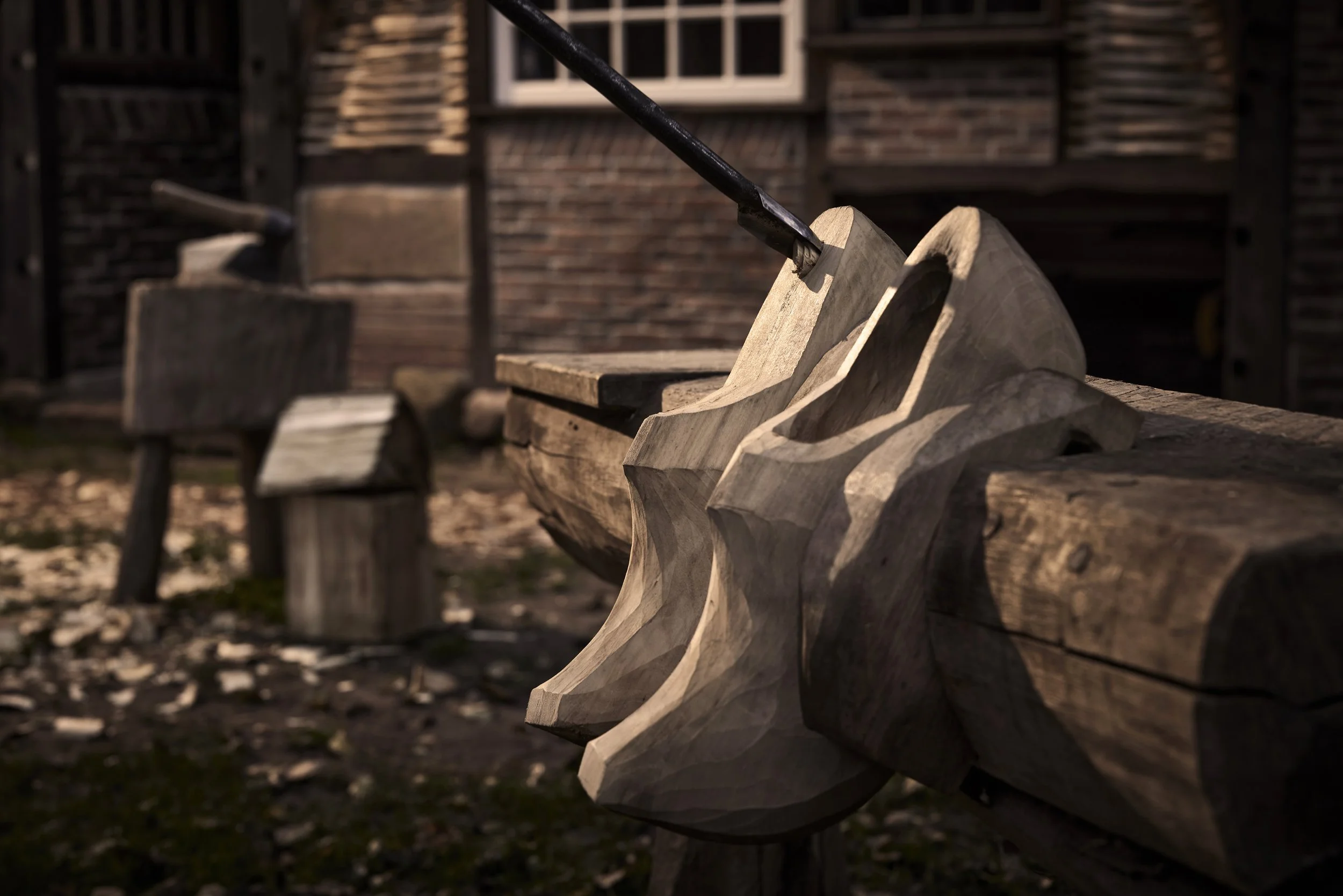















CLOG MAKER
The origins of clog making go way back. A clog has been found in Amsterdam dating back to 1230. In the Netherlands, clogs were the perfect footwear for the muddy ground. Today, some 200,000 people in Netherlands still wear wooden shoes, which are made by about 10 mechanized clog factories.
The wooden shoe as we know it today is a famous Dutch product and souvenir. However, the wooden shoe lost much of its diversity and symbolic value due to mechanical production. This, in fact, resulted in uniformity and mass quantities. For this reason, Gerald Getkate has followed in the footsteps of his ancestors as a fifth-generation manual clog maker and is one of the few in the Netherlands to still master.
Because Gerald’s clogs are handmade, he can give them regional characteristics, such as a pointed tip at the front for women and sharp edge for men.
“The art of making wooden shoes is in the fingers and takes up to 4 years to learn. This knowledge and skill do not come from a textbook. It must be passed on by a master to ensure that the knowledge is retained,” says Gerald.
Fortunately, there is a bit more interest from the new generation in the wooden shoe. Recently, 16-year-old Hugo Wessels has become an apprentice to Gerald as a clog maker. “I’ve been walking on wooden shoes all my life, so I thought, why not start making themmyself,” he says.
Even though Gerald has a waiting list of a year and a half, it is not possible to make a living from that today. Therefore, the future of the craft must find its way into hobbyism.